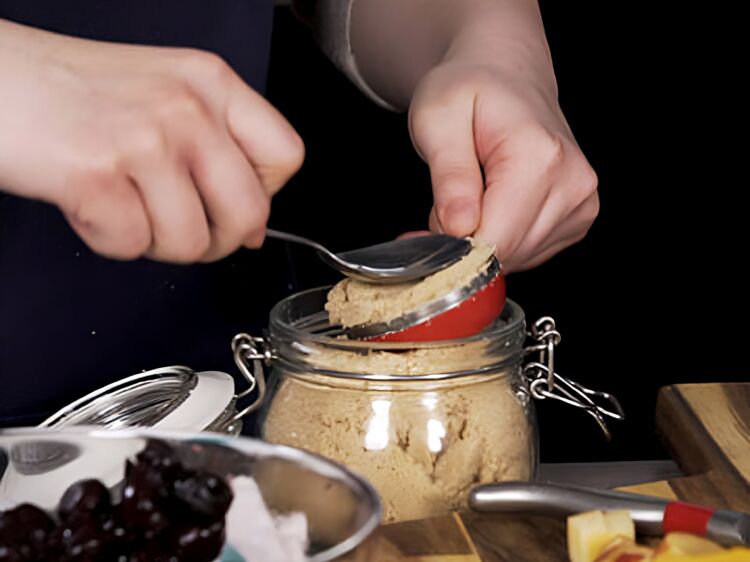
Categories
Tips for How to Store Brown Sugar
Back to Recipes & MoreStore Brown Sugar in an airtight container
The key to storing Brown Sugar is preventing exposure to the air. We do this for two reasons:
- Air will dry out your naturally moist Brown Sugar.
- Air may carry odours that will impact the smell and taste of your Brown Sugar.
To keep air out, simply store your Brown Sugar in any airtight container. Your best options are glass or reusable plastic containers with locking and sealing lids. If you don’t have a container large enough, a sealable, freezer-safe bag will do.
Keep Brown Sugar soft with a terra cotta “sugar saver”
An inexpensive way to try and keep your Brown Sugar moist, crumbly, and ready for use is to place a terra cotta sugar saver disc into the container with your sugar. Typically, you soak the disc in cold water for 10 to 15 minutes before drying the surface with a towel. Place the disc in the container and seal the lid. The moisture absorbed into the disc will keep your Brown Sugar from hardening for up to 3 months.
Should I remove Brown Sugar from the package?
It’s perfectly fine to store your Brown Sugar inside an airtight container and leave it in the package it came in. If you prefer to pour the sugar into a container, by all means, do so. However, if you leave it in the original package, you’ll never have to guess which type of Brown Sugar it is — and you’ll have easy access to the delicious recipe printed on every package of our Brown Sugars!
How do I soften hardened Brown Sugar?
If your Brown Sugar goes hard despite your best efforts to prevent it, don’t worry! It’s easy to fix. Here are some methods you can try:
- Place a slice of bread inside the airtight container with your Brown Sugar. The moisture in the bread will gradually soften the sugar. Replace the bread every few days to prevent mould from growing.
- Add apple slices to your airtight container of Brown Sugar. Apples are naturally full of moisture which will soften the sugar. Remove the apple slices once the sugar is soft again.
- Use a terra cotta sugar saver. Soak the disc for 10-15 minutes in cold water, then surface dry with a towel. Place the disc in the airtight container with your hardened Brown Sugar. The moisture in the disc will gradually transfer to the sugar.
Can I use hard Brown Sugar?
If your Brown Sugar has hardened and you need to use it right away, here are some tricks for getting it baking-ready again.
- Use a blender or food processor with metal blades. Scoop out approximately as much Brown Sugar as required for your recipe. Break up any large chunks to avoid damaging the blades of your food processor before adding the sugar to the blending chamber. Pulse or chop the sugar until it’s ground-up enough to use.
- Use a microwave. Scoop out approximately as much Brown Sugar as required for your recipe and put it in a microwave-safe bowl. Place a damp paper towel over the bowl and microwave in 10–15 second intervals until the sugar is soft. Do not allow the sugar to melt. Use as soon as possible.
- Use your oven. Preheat the oven to 250°F (121°C). Scoop out approximately as much Brown Sugar as required for your recipe and spread it on a baking sheet. Warm the sugar in the oven for about 5 minutes. Remove the sugar from the oven and break up any chunks with the back of a wooden spoon or another kitchen utensil. Keep repeating this process until the Brown Sugar is soft enough to use. Be careful not to accidentally burn the sugar.
Does Brown Sugar expire?
If stored properly, Brown Sugar should last indefinitely.
If your Brown Sugar smells “off” or unusual in some way (it should be sweet and a little earthy smelling, especially Dark Brown and Demerara Style), it has most likely absorbed the smell of something else nearby because it wasn’t sealed properly. In this case, it’s best to compost your sugar and buy a new package; it’s not necessarily bad, but it may affect the flavour of your food.